February 14 - 20, 2021: Issue 483
Narrabeen Lagoon Catchment: Worth Looking After - Some Past Notes And Current Photos
Looking after the Narrabeen Catchment and Lagoon, and its impact on human life has long featured in discussions of the past from over 100 years ago, everything from the the as yet then unopened lagoon entrance to the sea, the depletion of fish stocks and the saving of open space for human recreation has been the focus of community wishes for this special place as well as a subject pointed to by those who would regularly visit the place.
DEPUTATIONS. NARRABEEN LAGOON.
Dr. Nash, M.L.C., yesterday introduced to the Minister for Works, Mr. Lee, a deputation from the Warringah shire, which asked that the Government should grant assistance in making some permanent opening to the Narrabeen Lagoon, which, it was claimed, overflowed in flood time and affected the roads. Sometimes the floods lasted for six or seven months, and something in the nature of a weir was wanted, which would take the water off at a certain level.
Mr. Lee advised them to form a trust, as had been done in the case of the Curl Curl Lagoon. He would, however, have a resurvey made, and see if at a reasonable cost a weir could not be built, with which the ordinary flood and spring tide rises could be regulated. - Sydney Morning Herald (NSW : 1842 - 1954), Friday 7 May 1909, page 8
Narrabeen lagoon.
TO THE EDITOR.
Sir, — Having recently visited Narrabeen and Pittwater, I was interested in reading the letter of your correspondent with reference to tho deplorable condition of that once beautiful lake at Narrabeen, and I fail to understand how the residents in tile neighborhood can have been so apathetic as to allow a few professional fishermen to deplete the lagoon and reduce it to its present state of abandoned neglect for the sake of the few small fish which have been left in it. Its present dry condition could be remedied by opening a channel to the sea, and if the local residents are not in a position to undertake this work, visitors to the district would very likely give the necessary monetary assistance, if they found that proper attention would be given to keep the lake in its former good condition. A progress committee to look after the welfare of any beauty spots, to keep the roads in good repair, and to advertise the district as a holiday resort, would, no doubt, he the means of attracting a largo number of tourists who now spend their vacations (and their money) in other places less convenient. — Yours, etc.. D.Y. NARRABEEN LAGOON. (1905, January 28). The Daily Telegraph (Sydney, NSW : 1883 - 1930), p. 19. Retrieved from http://nla.gov.au/nla.news-article236911219
'D.Y.'was undoubtedly unaware that a Narrabeen Progress committee had been formed years prior to his letter, mostly focused on developing the district for monetary purposes and to have the tramline extended to the lagoon. However, one of its members had a father who had, according to him, bought land in the district in the mid 1880's specifically to save the plants on that land he purchased. He is speaking about the local Wildflower shows, one of which was a manly and attracted huge crowds to that place and provided much-needed income for its residents. The Manly Wildflower Show did not last for too long though as the taking of plants from the hills and areas around soon led to its own demise - too much was taken and far too quickly for these flowers to regenerate.:
TO THE EDITOR. OF THE HERALD.
Sir,-I read with a great deal of satisfaction the letter in your columns from Mr. James Norton, in which he directs attention to the wholesale and increasing destruction of our native plants and flowers through the medium of these shows. I deplore with him the rapid extirpation of our beautiful wild flowers, ferns, and indigenous plants in the districts adjacent to Sydney, and think that the show craze is assuming such proportions that it should be restrained. The floral wealth of our bush is disappearing rapidly enough in other ways without the extravagant appropriation that is made from it every year for these displays. We have not merely to consider the flowers and plants taken away, but it is the quantity, ruthlessly destroyed by the collectors, who care not what damage they do provided they can make up their dray loads.
I have had experience of this on my property at Lake Narrabeen, which I purposely purchased to preserve the beautiful cabbage-trees, ferns, and lilly-pilly trees upon it; and much as I admire the object for which the exhibitions are held, I cannot refrain from expressing the opinion that they are doing a deal of harm in the direction pointed out by Mr. Norton. The interval between the shows is far too short, and the contributions levied upon our native plants far too exacting. In a short time the beauty of the bush and gullies around Sydney and Pittwater, so much appreciated by strangers for their profuse adornment of native flowers and ferns, will be gone, and I think it behoves those profess a love for our indigenous plants to see that the present wanton destruction is stayed. The mischief is rapidly growing; the example set by Manly Beach is being followed by others, and this month we are having the bush and the gullies ransacked in every direction to supply the shows at North Shore and Kogarah, in addition to the one at Manly. I hope Mr. Norton's protest will have the effect of directing the attention of the promoters of these exhibitions to the injury they are, I believe unwittingly, doing to the beauty spots around their own and other localities near Sydney.
OBED WEST.
Barcom Glen. TO THE EDITOR OF THE HERALD. (1885, September 28). The Sydney Morning Herald (NSW : 1842 - 1954), p. 5. Retrieved from http://nla.gov.au/nla.news-article28364152
The Manly wildflower shows in their day were things of joy and beauty, and a great attraction for visitors. The first show was originated by Mr. Hayes, along with the Rev. T. Willis, while the former was Mayor, Mrs. Hayes and other ladies joined heartily in the scheme, which was to raise funds for St. Matthew's Church, and afford an advertisement for Manly. Willing volunteers gathered in the wildflowers, which were then abundant all round Manly, and the initial function was an astonishing and gratifying success. Mrs. Hayes states that over £250 was taken by the ladies in the first two hours of the festival of flowers. Each succeeding year the shows grew in importance, and attracted thousands of visitors from the city. The Manly Wildflower Show became a yearly event for the whole of Sydney, and was a fine advertisement for the place. Thousands of pounds were raised, which went to helping the different churches, who took half the proceeds, while the council received the other for the Improvement of the reserves. It was from the money gathered from the flowers that the oval was filled in and brought up to its present satisfactory condition, and many other park improvements were made from the funds. With the increasing scarcity of wildflowers the flower shows died out, after nearly a dozen years of existence. OLD MANLY. (1912, April 28). The Sun (Sydney, NSW : 1910 - 1954), , p. 11. Retrieved , from http://nla.gov.au/nla.news-article228857438
It took just over a decade to clear Manly of all her original wildflowers so places of worship may be raised on what was razed and an original watecourse 'filled' - an incongruous result of how and what people once thought, even while loving the original and natural 'church' all around them.
Another, from the eras when people were unaware that their gathering of flowers from these bushlands was doing damage:
WHERE THE WILD FLOWERS ARE.
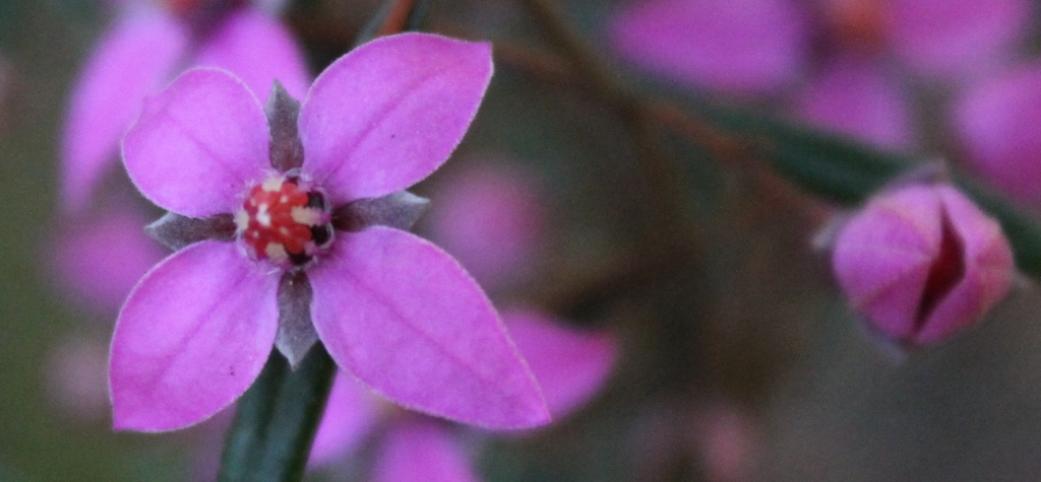
Boronia ledifolia - Sydney Boronia
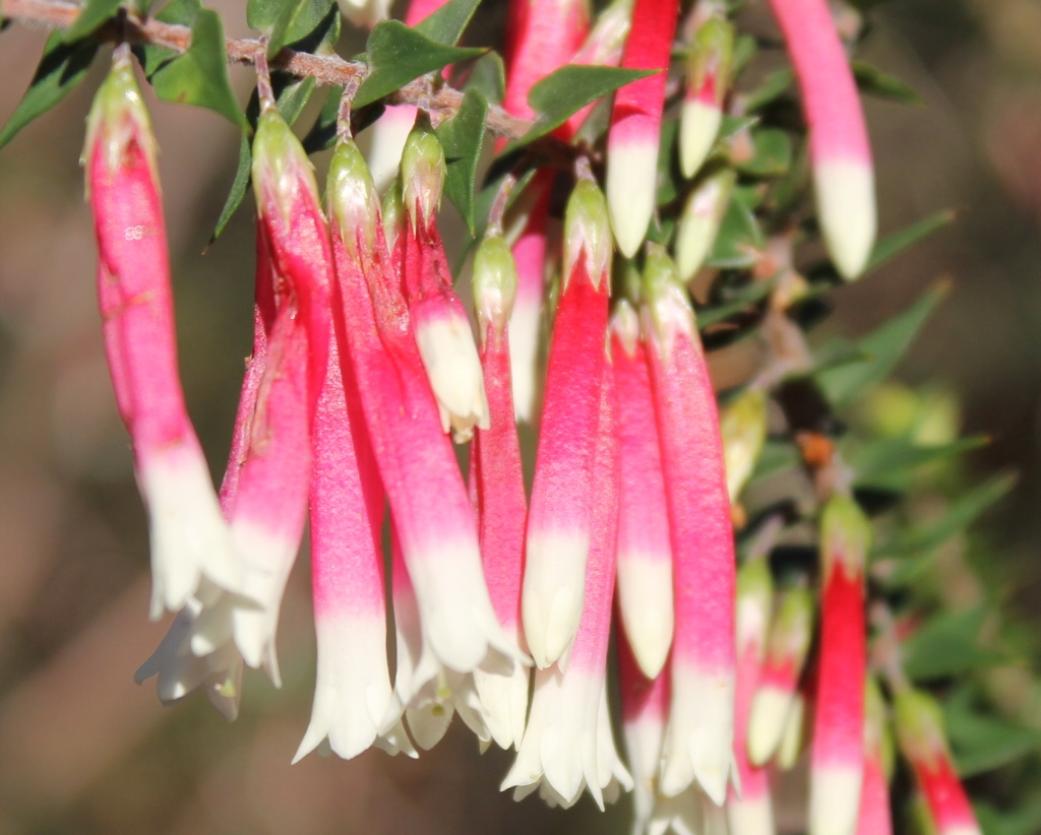
Epacris longiflora - Bush Fuschia
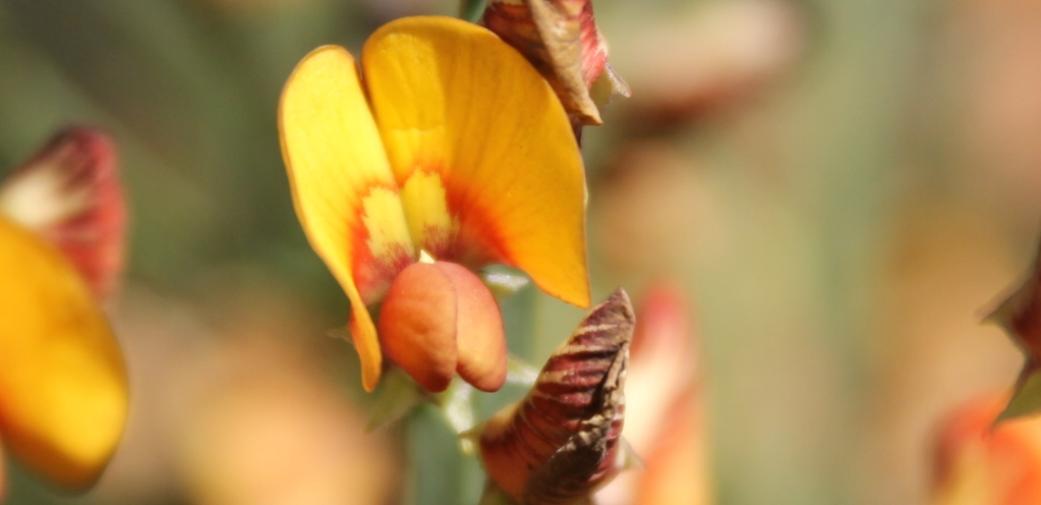
Bossiaea scolopendria - 'Plank Plant'
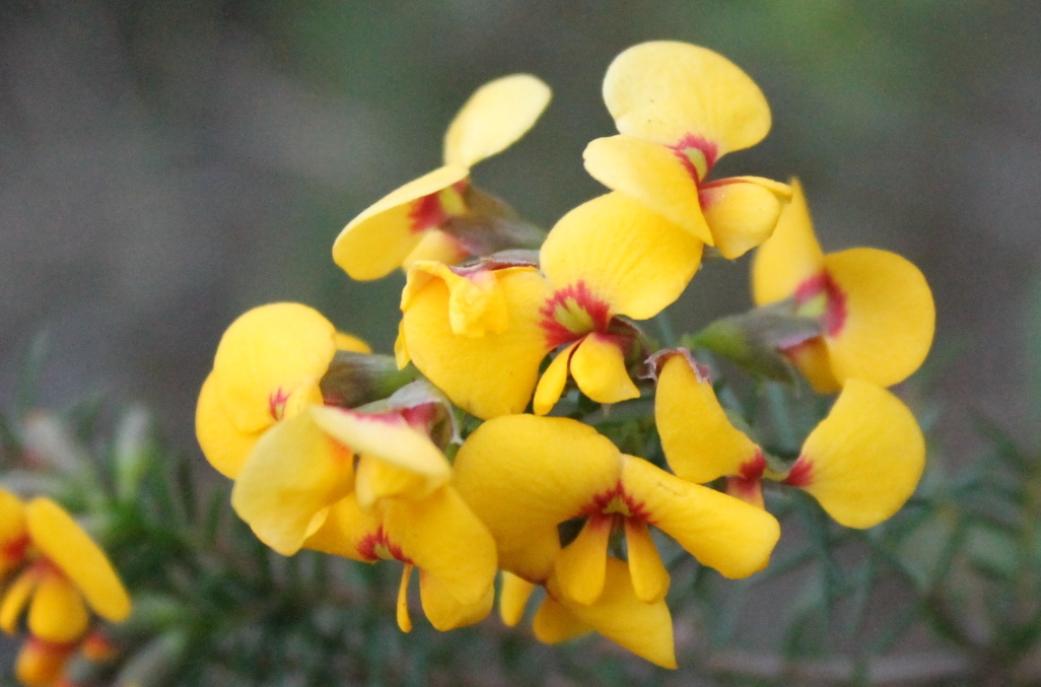
Narrabeen Lake. A FAVORITE PLEASURE RESORT.
(See illustration on page 26).
Narrabeen Lake is one of the prettiest spots within easy reach of Sydney. It is situated six miles from Manly, being accessible by coach daily from that popular watering-place. Narrabeen is rapidly becoming a favorite resort for picnic parties and pleasure-seekers of all kinds, who are attracted there by the beauty of the scenery, which is of the character so well described by Byron in the lines:
There is a pleasure in the pathless woods,
There is a rapture on the lonely shore, There is society where none intrudes,
By the deep sea, and music in its roar.
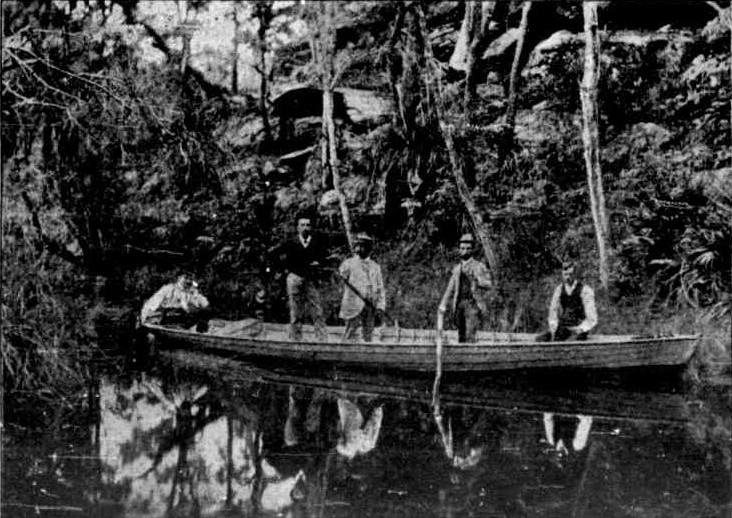 A great variety of ferns and wild native flowers abound in the neighborhood, and waratahs are very plentiful. The illustration is taken from the plateau - an elevated position in the fore- ground overlooking the lake. A beautiful view is obtained from here. To the left are picturesque hills and undulating vales, with their luxurious foliage and bushy undergrowth of wild vines, which flourish in tropical profusion; while here and there are huge gray rocks, whose sombre hue serves to tone down the rich colors in the scenery. To the right is a view of the beach and ocean, with a coastal steamer on her course northward. In the distance is Broken Bay, the entrance to the Hawkesbury River. Narrabeen Lake. (1890, March 29). Australian Town and Country Journal (NSW : 1870 - 1907), p. 26. Retrieved from http://nla.gov.au/nla.news-article71109744
A great variety of ferns and wild native flowers abound in the neighborhood, and waratahs are very plentiful. The illustration is taken from the plateau - an elevated position in the fore- ground overlooking the lake. A beautiful view is obtained from here. To the left are picturesque hills and undulating vales, with their luxurious foliage and bushy undergrowth of wild vines, which flourish in tropical profusion; while here and there are huge gray rocks, whose sombre hue serves to tone down the rich colors in the scenery. To the right is a view of the beach and ocean, with a coastal steamer on her course northward. In the distance is Broken Bay, the entrance to the Hawkesbury River. Narrabeen Lake. (1890, March 29). Australian Town and Country Journal (NSW : 1870 - 1907), p. 26. Retrieved from http://nla.gov.au/nla.news-article71109744
PEEPS FROM AN ABORIGINAL GIBBER GUNYAH.
(By W. J. Walton, in 'Mankind.').
' 'Tis pleasant from the peepholes Of retreat to peep at such a world.'— Cowper.
In the late eighties the district of Oxford Falls, Middle Creek, South Creek, Wheeler Creek and the country forming part of the southern boundary of the Narrabeen lagoon, was, for all intents and purposes, in much the same virgin state as when Cook passed along the coast on his memorable voyage up north. Much of the surrounding country was wild and mountainous, very heavily timbered in places, affording some security to the rock wallabies, which, at that time, were not quite extinct. It was a land of gullies and waterfalls, having magnificent Views, of line seascapes, here and there intersected' by a number of small creeks, which, joining the main creeks, drained a great part of the watershed of the Narrabeen Lakes. In the springtime this God-made country, made joyous with the songs of birds, had a burst of efflorescence, a kaleidoscope of colour probably unsurpassed in the Australian continent.
Towards the end of the year the Christmas Bells —'Blandfordia nobilis' and 'Bland-fordia florabunda' — grew in thick patches, the nodding bells waving in the wind like the wheat in a wheat field. The Christmas Bush — 'Cerato-petalum gummiferum' — with its enlarged red sepals, came to announce that Christmas was near. Through the seasons the wealth of flowering trees and plants followed each other in quick succession; Boronia, Waratahs, Flannel Flowers, Epacris, with many others, made the wilderness of rocks and sand to blossom as the rose. Besides its wonderful flora, which, now that it is almost too late, is being regarded by the scientific world as being worthy to rank amongst the botanical treasures of the world, it contained many evidences of men, manners and customs of a bygone race.
Scratched and punctured on the naked rocks for the purposes of the native ceremonial are the petroglyphs of a primitive stone age race. Do not smile — it is from such humble beginnings that all art and culture have sprung. From a retreat where is was usual in those days of bush ramblings to spend the night, a case — a stonehouse or 'gibber gunyah' of the blades — the eye rests on what further down on the opposite side of the valley is an old aboriginal ceremony ground. Viewed at night, when the moon is obscured by clouds, it has a weird, uncanny look. The spindly trees standing sentinel on the ridge at the back of the rock saddle, look like the ghosts of the dead race.
In Governor Phillip's time there is reason to think that a great part of this Wheeler Creek area was an important aboriginal ceremony ground. Besides the principal group of rock carvings, there are spread over a wide extent of country other smaller groups, some of which after the lapse of years are difficult to locate. Many have been effaced, others are covered with soil and the encroaching bush. There are many isolated carvings scattered about, like the sacred circles, emus, fish and eels, or the large snake on a rock near the waterhole. All these to the native mind had a deep spiritual meaning.
The snake is very prominent in the many myths and legends of the Aborigines. He always lives in a waterhole. The stories about him may vary, but the intruder in his home is usually swallowed. Little of a reliable nature is known of the ceremonial life of the Aborigine in the Manly district; still, it is possible by the study of their rock carvings and customs elsewhere to get a fair insight into the daily lives of these people. The petroglyphs on the main group show they were hunters. The tracking and capture of the kangaroo are shown; there are footprints of the marsupial; following those are the footprints of men. Two kangaroos have spears in their necks. Below, a little distance on the sloping rock, are the hunters who have thrown the spears. One scene is portrayed by two men; they are having a battle royal. In the hand of each of the men is a big waddy, evidently in vigorous use. What is was all about we do not know — probably it was over a woman. Here again footprints were once to be seen: they were arranged in such a way as to indicate the progress of the battle and the flight and defeat of the smaller man. As is usual in most groups of rock carvings, the food supply is well represented. Fish, large rays and the food animals are all there. A deity without radial lines or a circle completes the group. The light side of the black's life Is represented by a number of large shells threaded on a string. In shape it resembles a large necklace. Amongst all the aboriginal rock carvings in Warringah Shire there is none like it. It is complete even to the loop by which it was held in the hand. Its use was to produce primitive music or beat time at the native dances.
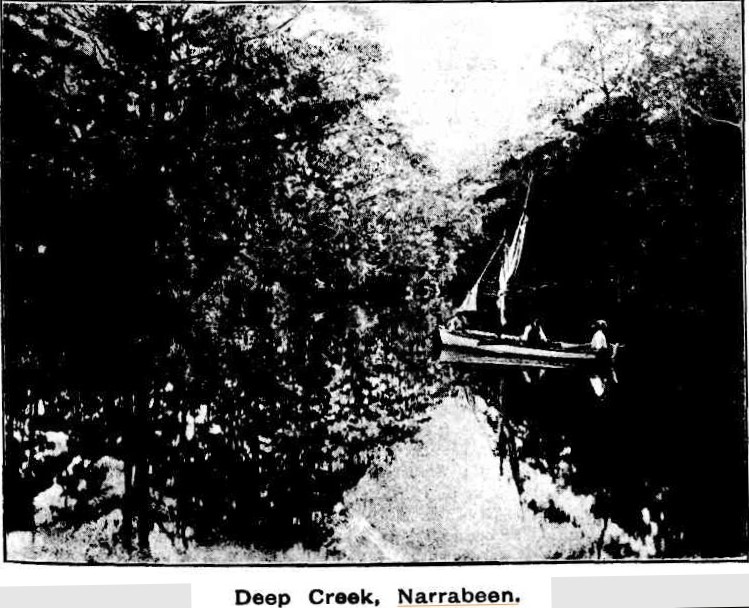
Above: Deep Creek, Narrabeen. Contemporary Journalism. (1893, November 25). Illustrated Sydney News (NSW : 1881 - 1894), p. 15. Retrieved from http://nla.gov.au/nla.news-article63672414 Below: Narrabeen Lakes, Items;No.a116487 and No.a116488, courtesy State Library of NSW
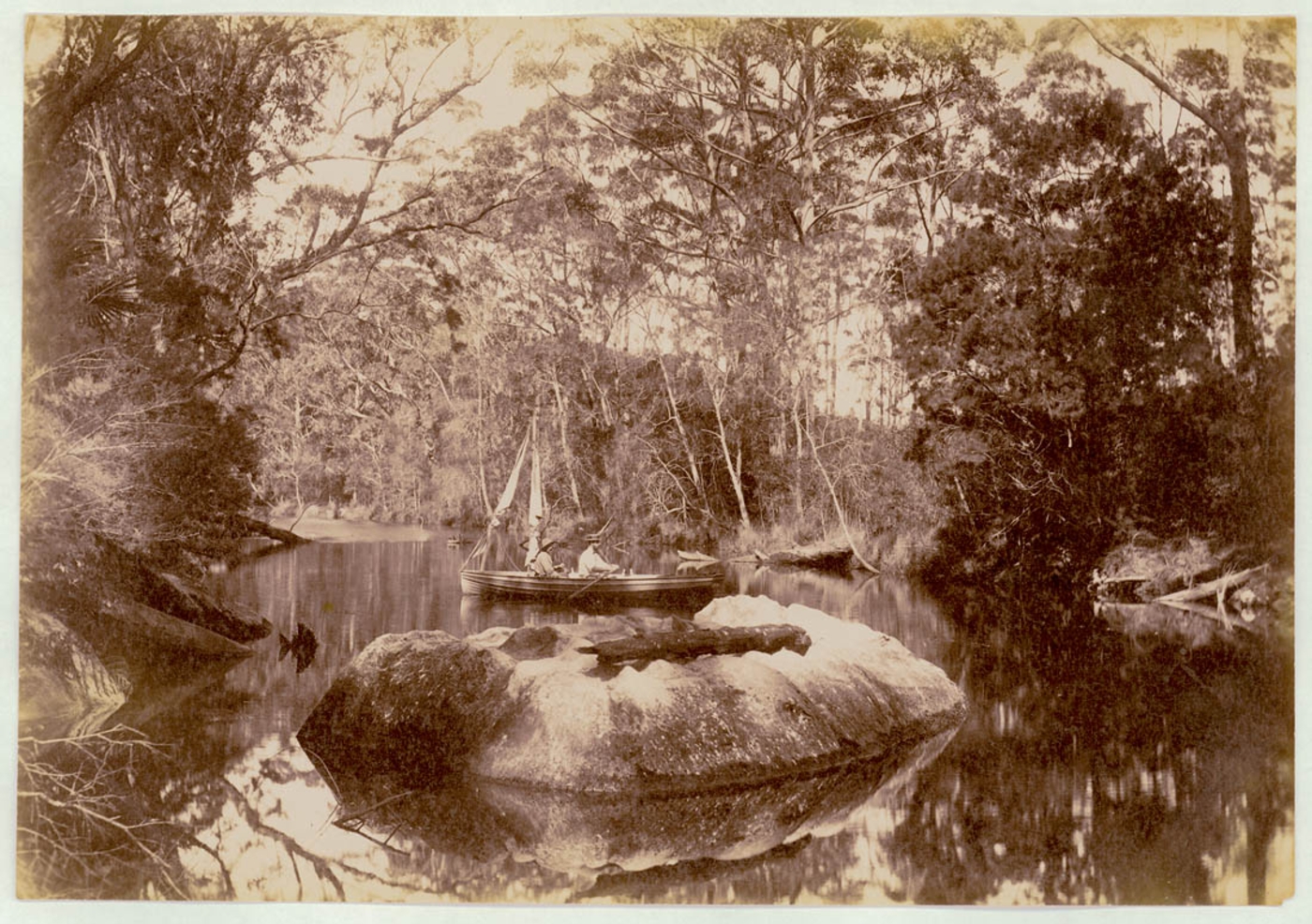
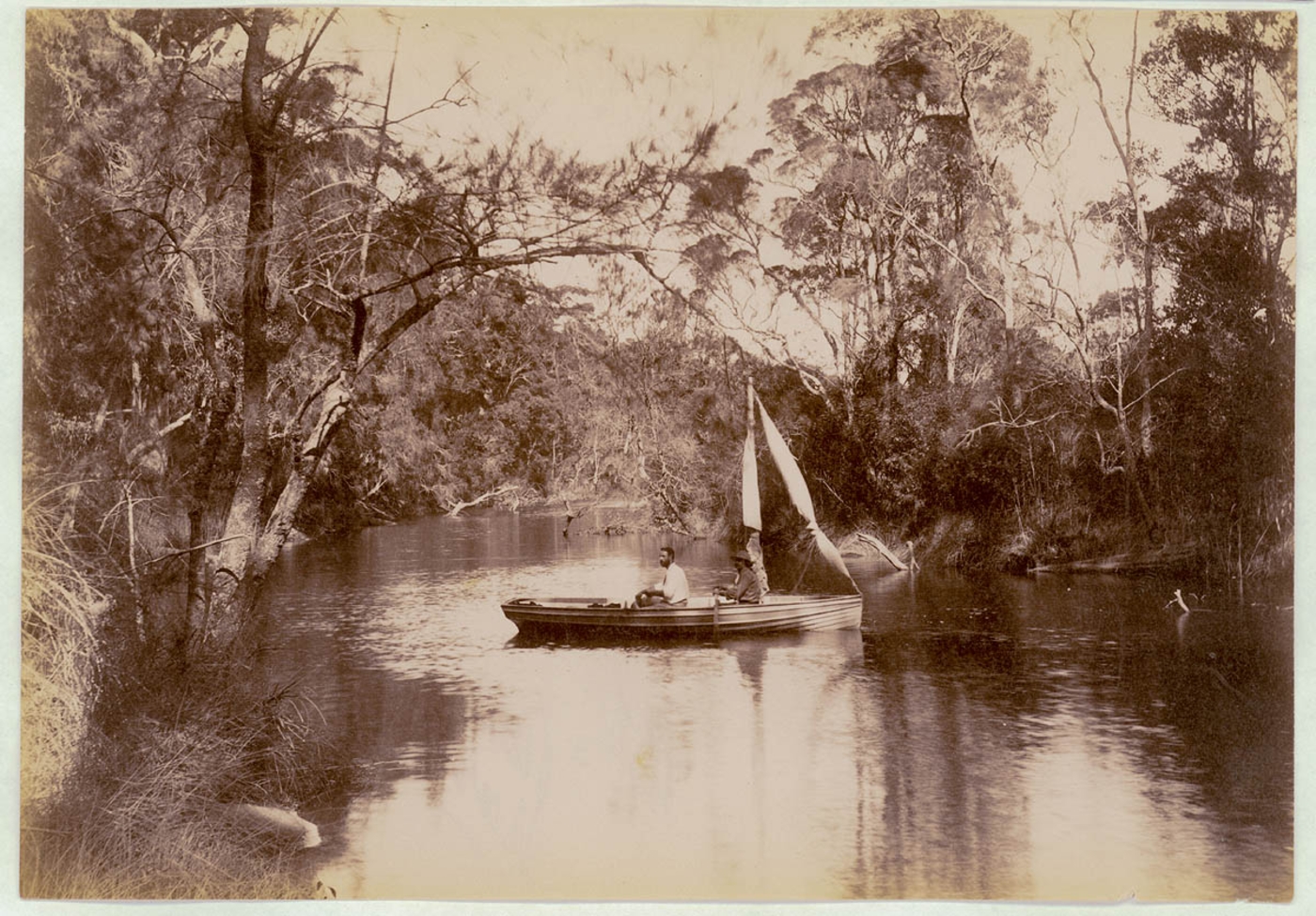
Finally the Wild Flowers and Native Plants Protection Act, 1927 was brought in to back up the meanings behind the ideas put forth by people alike Obed West and Mr. Eccleston Du Faur decades ago.
Narrabeen and its surrounds even featured as a place of flowers to be remembered by those who served in World War I, so many of whom came from Narrabeen:
CHRISTMAS BELLS
(By D. W. M.)
The Christmas bells are blooming upon tho hills to-day,
And ringing, out a message to the boys who are away;
And that is how we're feeling while, all the hills along,
The flower-bells are pealing a faint and fairy song. ,
When golden-rod's in glory, the hills are all ablaze,
And lightly through the tree-tops a scented whisper strays:-
Of all the brave bush-blossoms net one a story tells -
As full of truth and beauty as do the Christmas bells.
If you have climbed the ridges and stood on Beacon Hill,
And known how sweet boronia with scent the air can fill, ,
And looked across to Deewhy, one golden afternoon,
And seen the shadows dropping their spears in the lagoon,
And seen in pleasant glimpses, the purple hills between,
A little patch of silver, the lakes of Narrabeen,
And looked upon, the beaches whose singing surf-line swells,
Then you have heard the message that's in the Christmas bells.
The story of Australia in flower speech is told,
Rung softly from the petals all stained with red and gold,
With gold that is for glory, and red that is for war;
'And, chiming with the music of the waves upon the shore,
They sing the song of Anzac, the chanty of the free,
Of liberty as chainless as is the chainless sea;
The epic of our soldiers beside the Dardanelles,
Is echoed in the melody of Sydney's Christmas bells.
Australia loves her sunlight, her freedom and her room, .
Her hill-tops and her gullies where all the wildflowers bloom,
Her little native roses, her flannel-flowers in flocks, .
The bold and crimson waratah that in the wind's lap rocks;
The soldier who will save her will carry in his mind
A memory of the bushland that he must leave behind;
He goes to fight for freedom, and all that freedom spells,
And he shall wear, for favor, a bunch of Christmas bells
CHRISTMAS BELLS (1915, December 26). The Sun (Sydney, NSW : 1910 - 1954), p. 5 (SUNDAY EDITION). Retrieved from http://nla.gov.au/nla.news-article221925042
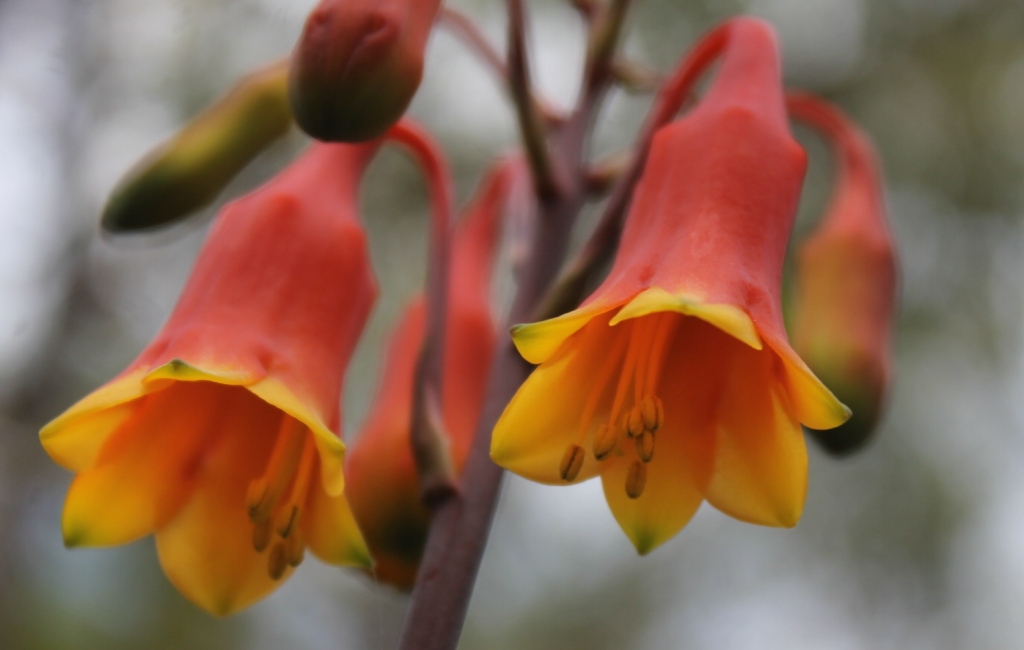
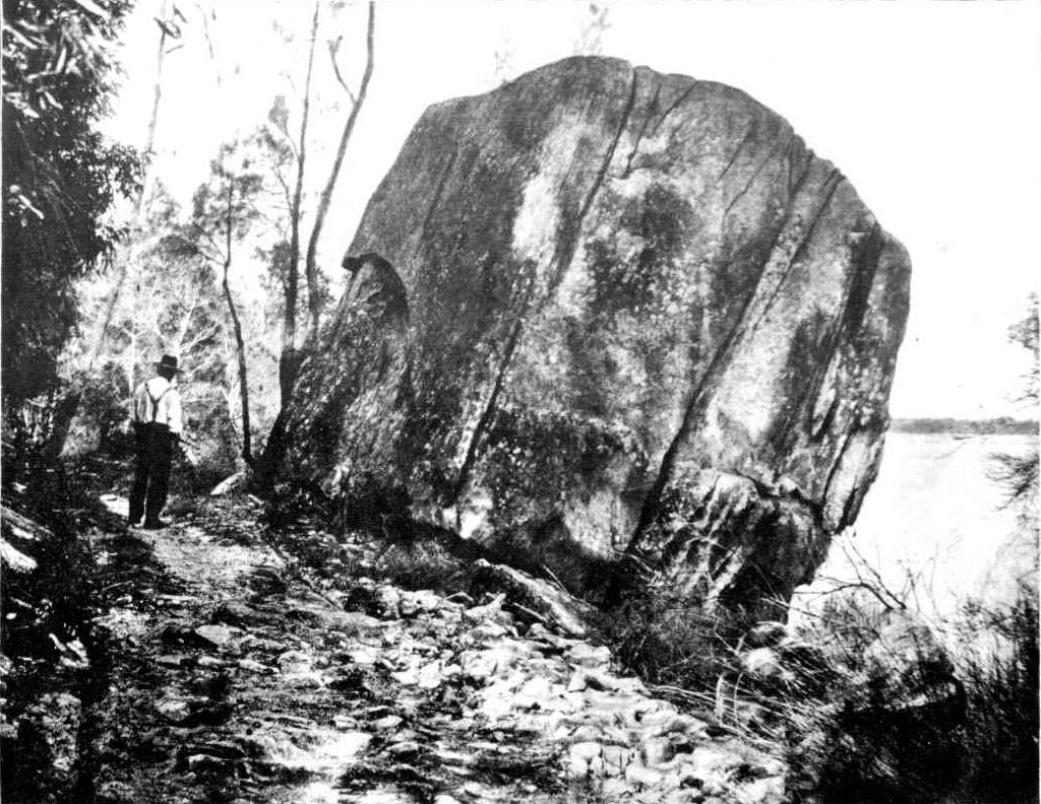
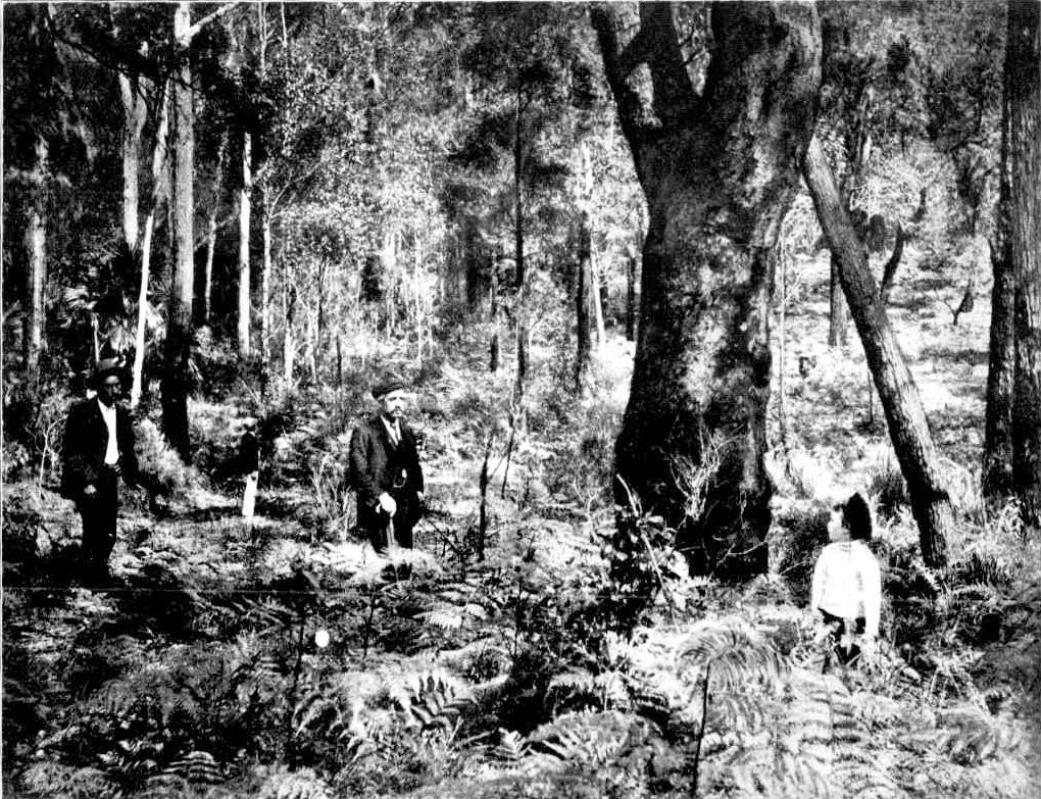
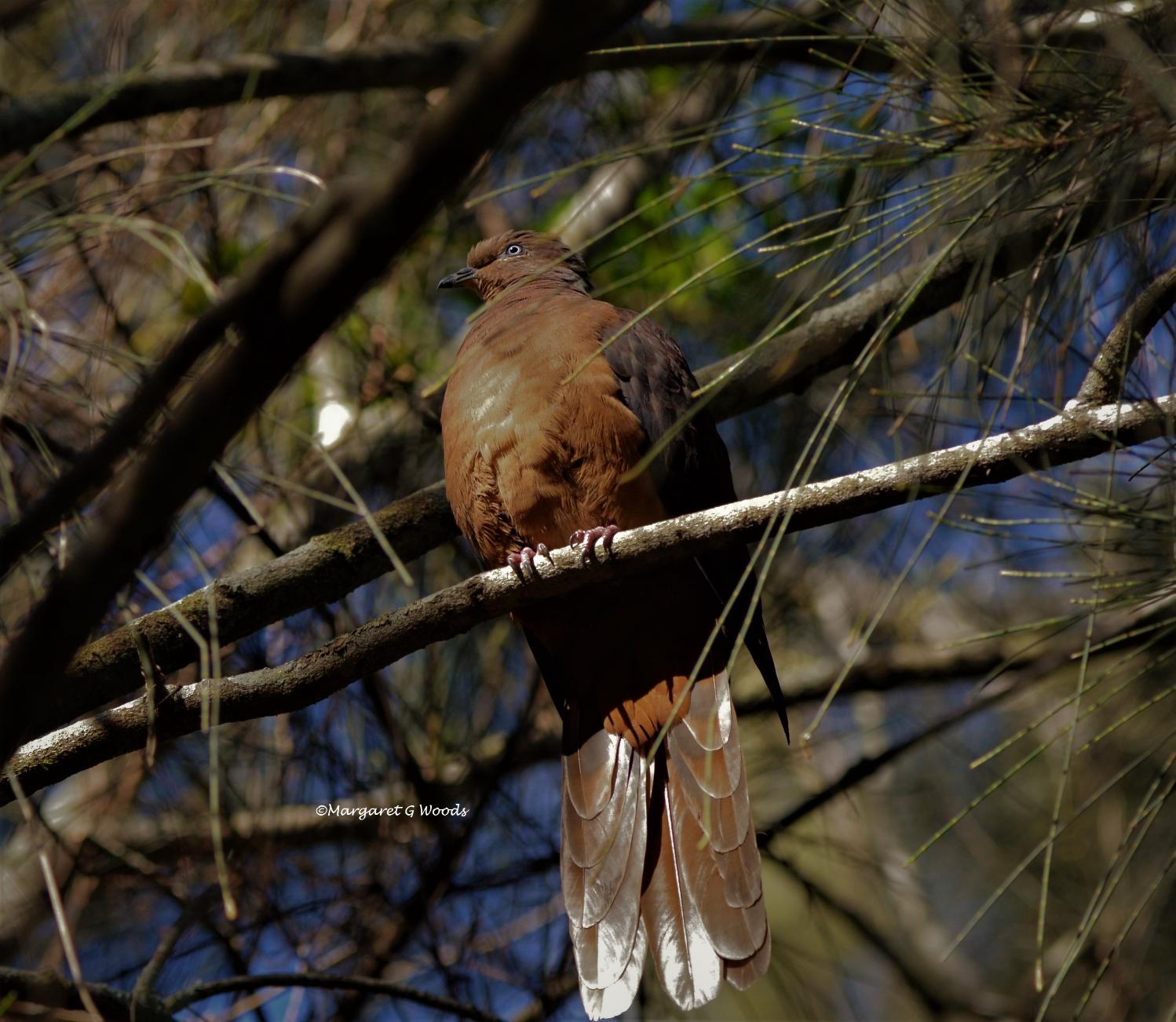
FONLC Brown Dove Irrawong
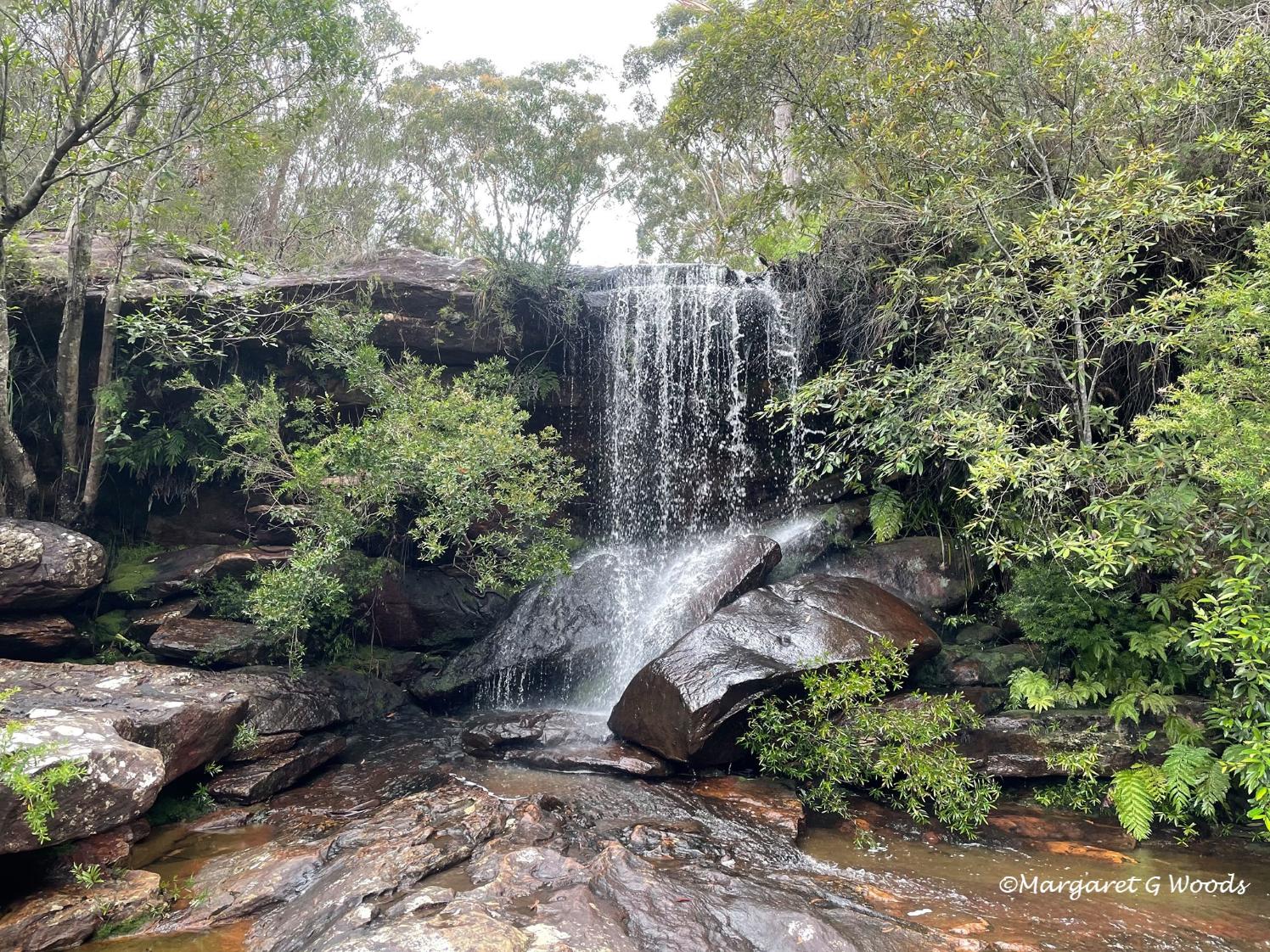
FONLC waterfalls at Irrawong
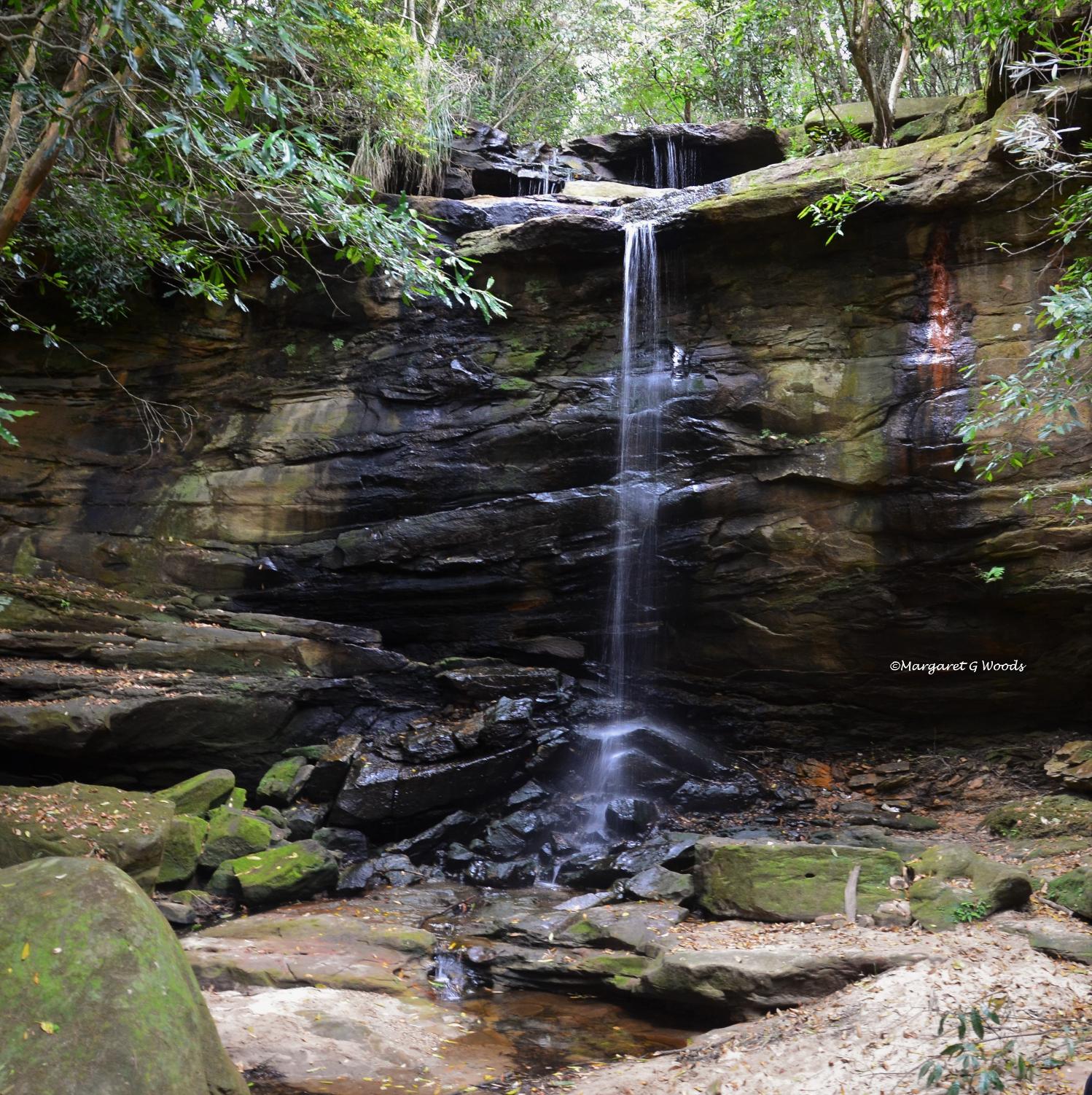
FONLC waterfalls at Irrawong
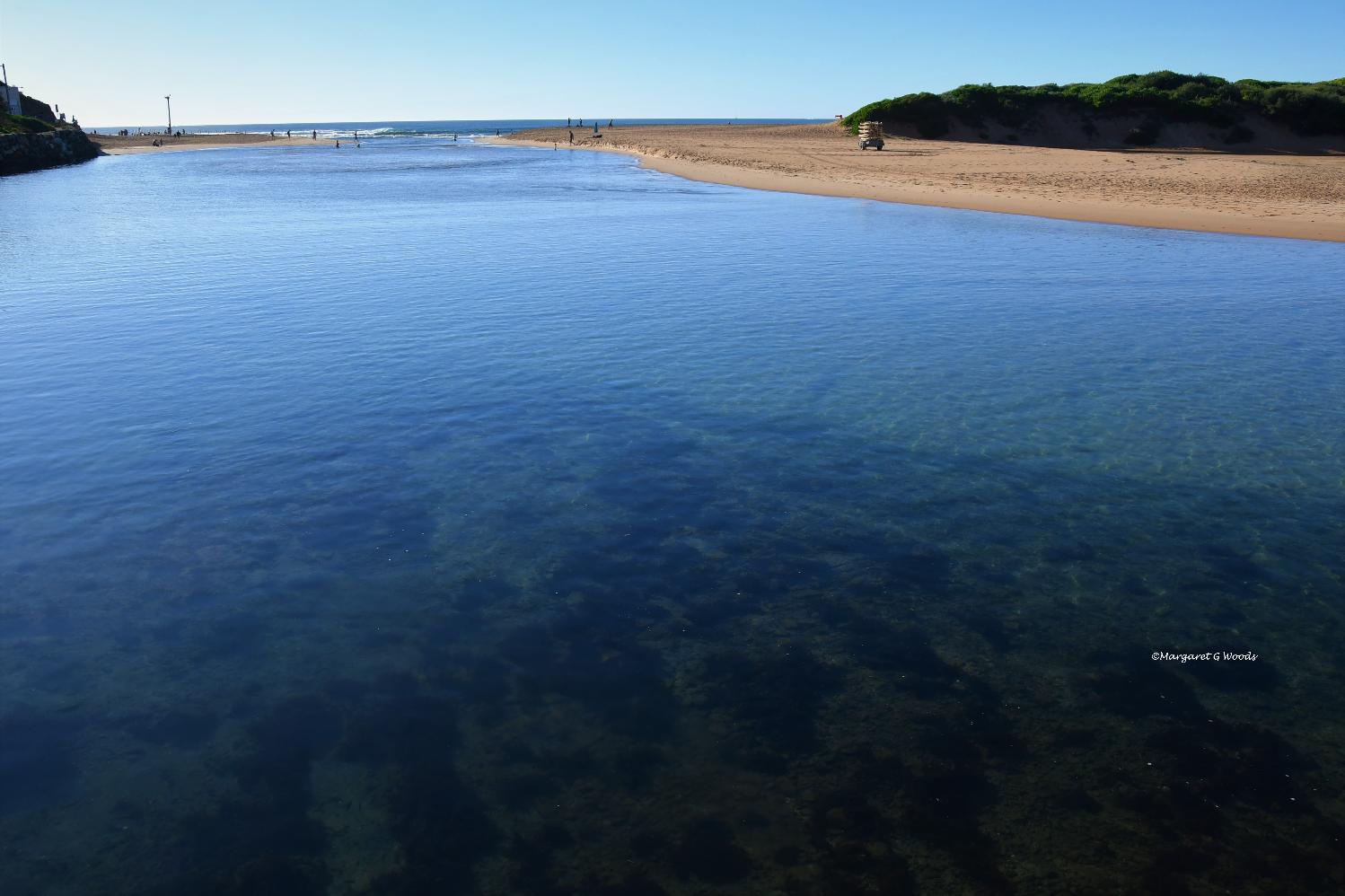
Narrabeen Lagoon entrance view
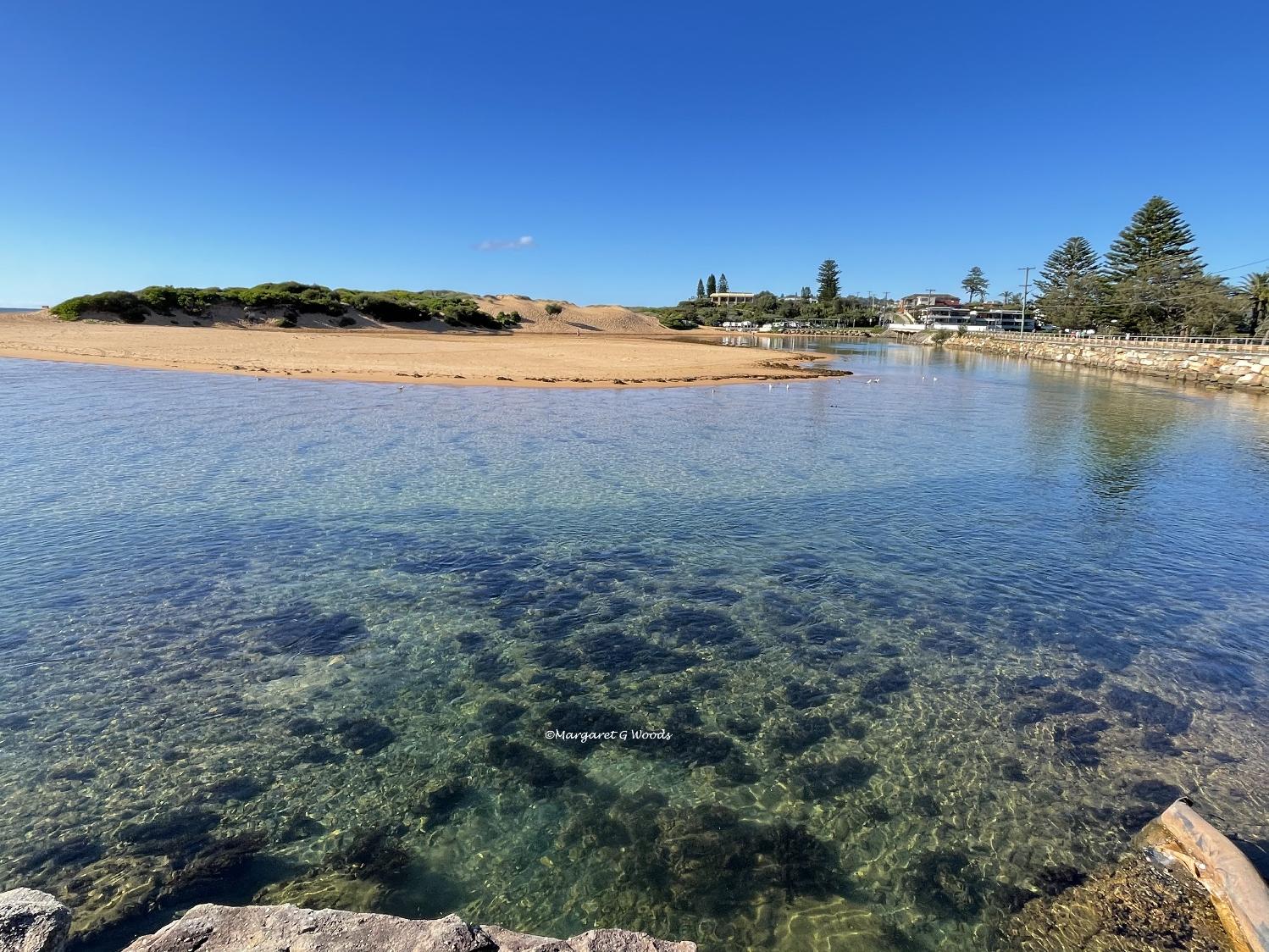
Narrabeen Lagoon entrance view
Narrabeen Lagoon - one of the other 'residents'